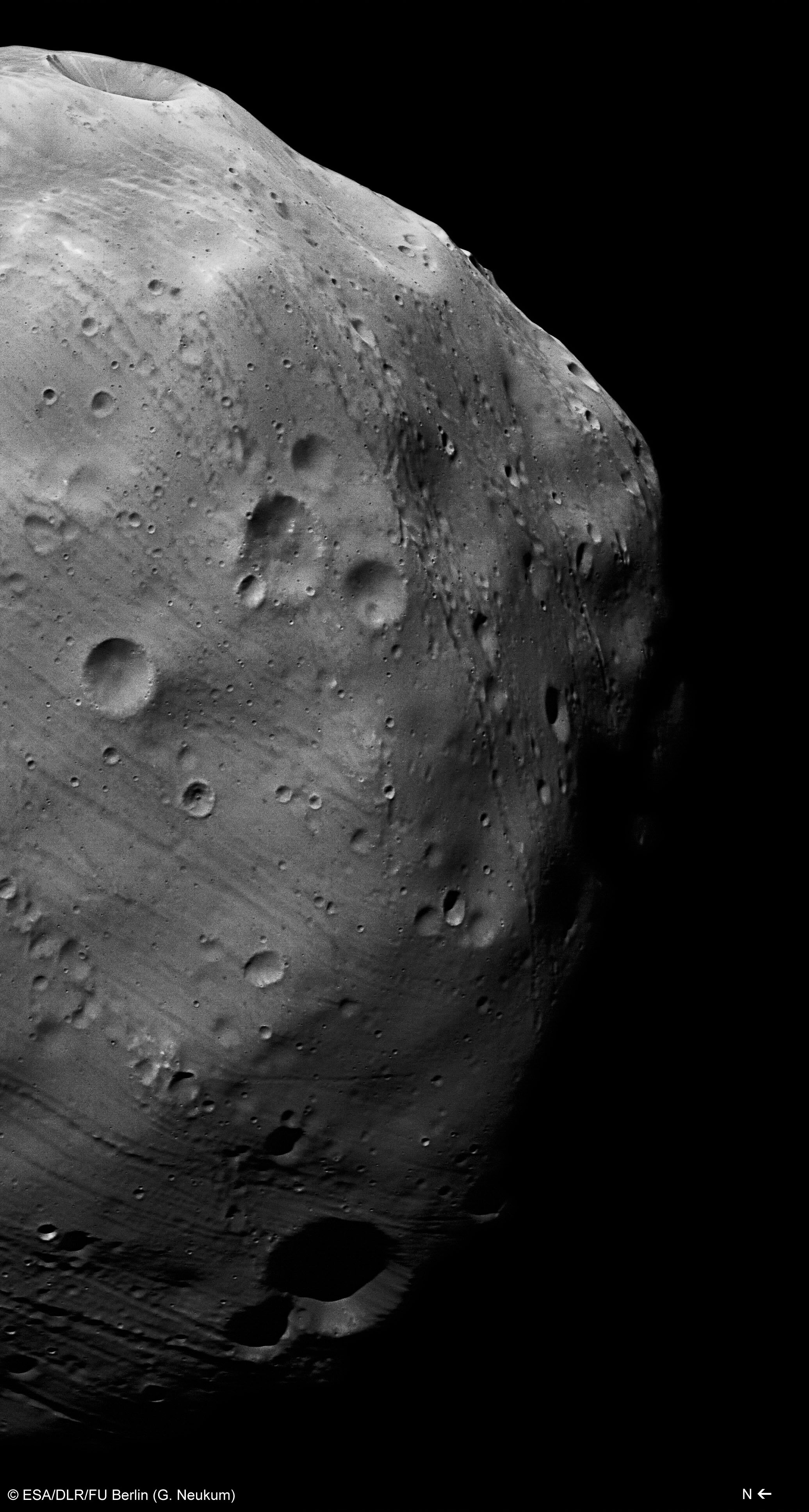There won’t be any pictures out of this close encounter, but the animations sure were spectacular. The European Space Agency’s Mars Express spacecraft skimmed just 45 kilometers (28 miles) above the surface of the moon Phobos yesterday, and through these various videos you can see what the orbital trajectory would have looked like during that time.
“The flyby on 29 December will be so close and fast that Mars Express will not be able to take any images, but instead it will yield the most accurate details yet of the moon’s gravitational field and, in turn, provide new details of its internal structure,” ESA wrote in a press release last week.
“As the spacecraft passes close to Phobos, it will be pulled slightly off course by the moon’s gravity, changing the spacecraft’s velocity by no more than a few centimetres per second. These small deviations will be reflected in the spacecraft’s radio signals as they are beamed back to Earth, and scientists can then translate them into measurements of the mass and density structure inside the moon.”
The goal is to learn more about the structure of Phobos with the aim of figuring out where the moon came from. There are competing theories about the origin of Phobos and the other Martian moon, Deimos. Perhaps they were captured asteroids, or perhaps they were made up of debris made up from huge collisions from the Martian surface.
“Earlier flybys, including the previous closest approach of 67 km in March 2010, have already suggested that the moon could be between a quarter and a third empty space – essentially a rubble pile with large spaces between the rocky blocks that make up the moon’s interior,” ESA added.
Check out the rest of the videos below.
Source: ESA


It is an alien spaceship. Well, maybe not. But it could make a great space station.
I vote captured asteroid. When the first close-up images from Phobos were made available, I for one assumed the stratified appearance of the surface indicated it was once part of the crust of a much larger object/planetesimal. Then came Vesta and the realization that impacts can create shock waves that leave compression zones that RESEMBLE stratified layering…
Did anyone see the news footage of Buzz Aldrin a few years ago when he was talking about Phobos while he was trying to sell his new book, “Magnificent Desolation”??
He stated several times during his TV interviews that, on the surface of Phobos exists a structure which appears to be artificial. He also said that once people can actually see this structure, the first thing that they will want to do is get a much closer look.
With the advanced technologies being used in today’s space program, it is highly unlikely that this orbiter did not take ANY pictures of Phobos’ surface.
In fact…. I would go so far as to say that the claim that ‘no photos were taken’ is a total lie.
Even if there is no structure, the idea that the space scientists were incapable of taking even one still-frame photograph is poppycock. Instead, we get a computer simulation of the fly-by.
The discover of internal hollow structure as caverne inside Phobos
remind us a more dramatic and surprising moon-asteroid around Saturn
as Hyperion that may have large-scale
inhomogeneities within its interior. (density half the water..0.544±0.050 g/cm)..
It is quite natural to imagine that inside these huge spaces life
maybe housed and it may be hold. It is very suggestive to visit the
interior of such mysterious moons searching for inner place to locate
save biological stations and in future human stations….Moreover these
places are ideal for the Science experiment and to hide Our History for far future archeology
See related
ChinChin. J. Astron. Astrophys. Vol. 8 (2008), Suppl
:
arXiv:0705.1805
Daniele Fargion
Phys Depart Rome Univ. Italy
The 2 points that I was making in my initial comments were that the Soviets put forth the theory that Phobos was hollow in the 1950s and were subsequently attacked for their assessment by the same people who are surprised today by that fact.
The second point was the claim that no photographs or video images of Phobos were taken during the fly-by. That is completely unrealistic.
There was more time, money, and effort put forth in the computer animation than there was in taking ‘actual’ pictures.
Is there no camera on the orbiter? According to the article, this was the closest that any man-made vehicle has been to Phobos….. so the idea that no images were captured is completely unbelievable.
Also, it is my understanding that, prior to the Soviets losing contact with their Phobos 2 craft, it was the closest that any vehicle had gotten to the Mars moon.